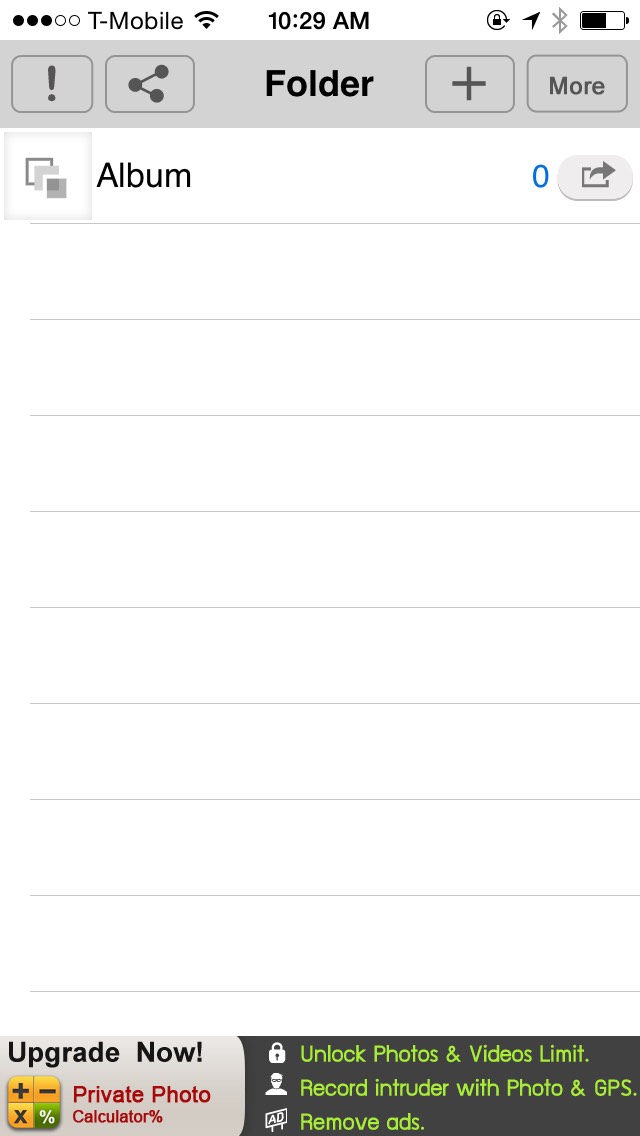FACT CHECK: Should parents be aware of a seemingly benign calculator app that enables users to hide photos on phones and tablets?
Claim: Parents should be on the lookout for a seemingly benign calculator app that enables users to hide photos on phones and tablets.
 MIXTURE
MIXTURE
WHAT'S TRUE: A calculator app available on the iTunes store allows users to capture and store photographs and hide them under a passcode; users not in the know would likely assume the application was simply a calculator. WHAT'S FALSE: The app presents an exceptional danger to children and teens, the app is the only way teens can hide data, the app's functions are markedly different from other methods of secretly capturing and sharing images.
Example: [Collected via Twitter and Facebook, September 2015]
PARENTS- Beware of this new "calculator" app that is truly secret storage for pictures!... https://t.co/Tre642cwXb
— Street Hope TN (@StreetHopeTN) September 2, 2015
Does your child have this app-- Calculator%? You need to know what this app really is for--- and it isn't for adding numbers! Check out this new video (less than 2 minutes)!
Posted by Blount County District Attorney-41st Judicial Circuit on Tuesday, September 1, 2015
Origins: On 1 September 2015, the Facebook page Blount County District Attorney (41st Judicial Circuit) published the status update and video embedded above. The woman who narrates the video describes a mobile application that displays on Apple devices as "Calculator%" — anyone who picked up a device onto which the Calculator% app was downloaded would likely presume it was a simple calculator, but the video described the application's true purpose.
Upon launching, the app opens to what looks to be (and is) a functional calculator:

However, entering a passcode (surrounded by periods) triggers a cloaked primary function — when unlocked, the app leads to a secure photo album accessible only to those with the password:

The app's full official name is Private Photo (Calculator%) by Digital Mind Co., Ltd., and its iTunes page features the following description (and a more accurate app icon):
Private Photo (Calculator%) app is private photos and videos hidden behind calculator. Anyone who starts this application looks at a calculator but if you put in passcode it will open up private area. All files are securely stored in the App and remain completely private and confidential.
With respect to the technical functions of the app, the video's claims were accurate: the Calculator% app indeed functions as a secondary, secret storage area for private videos and photographs. As far as the information being particularly relevant to parents of children and teens, the warning was slightly exaggerated.
First, legitimate reasons exist for an app with such functions. One individual who left a review described peace of mind regarding privacy when others borrowed their device:
You don't have to worry about Anyone asking to hold Ur phone bcuz All Photo's and Video's are Privately Locked away. Most important, They WONT even know that Photos and Videos are There. And its a Great workin Calculator, and i Use it all the time as well.
Moreover, social media researcher danah boyd examined the phenomenon of encoded media use by teens (which she dubbed "social steganography") in her 2014 book It's Complicated: The Social Lives of Networked Teens [PDF]. In her research, boyd said she discovered that teens regularly hid information from parents in a manner that was visible (but not legible) to them:
Over the decade that I observed teens’ social media practices, I watched encoding content become more common. In 2010–2011, teens started talking about subliminal tweeting, or “subtweeting,” to refer to the practice of encoding tweets to render them meaningless to clueless outsiders. More often than not, they employed this term when referencing various teen dramas that occurred between friends and classmates that required insider knowledge to decode. In other words, teens subtweet to talk behind someone else’s back. Although this is only one technique for encoding information, the rise of this term highlights how popular the practice has become.
Encoding content, subtweeting, and otherwise engaging in social steganography offers one strategy for reclaiming agency in an effort to achieve privacy in networked publics. In doing so, teens recognize that limiting access to meaning can be a much more powerful tool for achieving privacy than trying to limit access to the content itself. Although not all teenagers are carefully crafting content to be understood by a limited audience, many are exploring techniques like this to express themselves privately in situations in which they assume that others are watching.
The warning excerpted above also hinted at the dangers posed to teens outside their parents watchful eye by predators, as boyd wrote in a 2012 New York Times article:
The most deadly misconception about American youth has been the sexual predator panic. The model we have of the online sexual predator is this lurking man who reaches out on the Internet and grabs a kid. And there is no data that support that. The vast majority of sex crimes against kids involve someone that kid trusts, and it’s overwhelmingly family members.
A followup 2014 piece in the same paper described boyd's subsequent findings about teens, privacy, and social media:
[Teens] practice a sort of interpersonal encryption when using social networks. For instance, parents might read but not fully understand teenagers’ posts and messages because they’re using in-jokes, nicknames, code words, subliminal tweeting or “sub-tweeting” so tweets become “meaningless to clueless outsiders.” I might find it silly if a 16-year-old from New Jersey on Facebook says she is 95 years old and from Easter Island. However, Boyd sees young people dissembling about their age or geography as the technological equivalent of writing messages with invisible ink. According to her, these personae are often modes of self-protection (from adult sexual predators, for instance) and also self-expression. “Rather than finding privacy by controlling access to content,” she writes, “many teens are instead controlling access to meaning.”
So while the technological functions of the calculator app are accurately described in the video, its relevance to children's safety is questionable. It's true that the cloaking app is one of a number of ways teens (and adults) can restrict photographs from prying eyes under an additional layer of password protection, but teenagers in particular already can and do employ plenty of other means to create and save confidential content.
Last updated: 2 September 2015
Originally published: 2 September 2015

